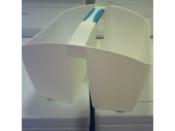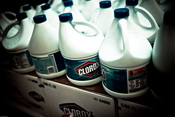Consumer Packaged Goods compromise the bulk of Clorox's products. The segments in which the Glad brand operates yield almost $8 million retail per annum with three key categories including - but not limited to - trash bags, wraps and disposable food containers. Glad's main competitors are Hefty (Pactiv), SC Johnson & Sons, Ruffy, Reynolds, and Rubbermaid. Hefty is the most popular brand for trash bags, while Ruffy is on the lower end and Clorox ranks in the middle. SC Johnson - which produces Ziploc Bags and SaranWrap - is Glad's main competitor in the market for plastic wrap and disposable food containers (Cheryl Hagedorn).
As a result of longevity and therefore strong brand awareness, competition is fierce in these various markets. Glad's competitors work with a greater amount of working capital and they spend an abundance of money at trade with retailers in an effort to gain sales. Glad's Contribution Margin goals are lower than their competitors'.
Glad has a low contribution margin, but must monitor the cost of Resin prices. Resin is a hydro-carbon secretion of many plants, particularly coniferous trees, valued for its chemical constituents and uses such as varnishes and adhesives, as an important source of raw materials for organic synthesis, or for incense and perfume (Wikidpedia.com). Much like the price increases in the natural gas and oil industries, Glad cannot control the price increases of Resin. Thus, because Glad cannot control Resin prices, Resin prices control Glad and the pricing of their products, and it is the same for all of Glad's competitors (Cheryl Hagedorn). Clorox accepts the lower profit goals because they have greater profits in the other sectors that they compete in.
Unusual for a corporation of its size, SC Johnson & Sons is a privately held company. This means that ownership of the...


